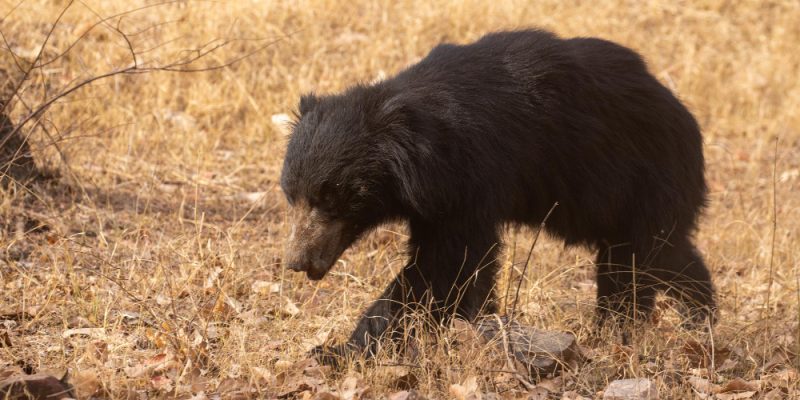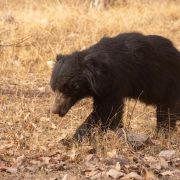How to Counter Bear: Best Strategies and Tactics Explained

Encounters with bears, whether in the wilderness or rural regions, can be intimidating and dangerous. While bear attacks are rare, they do occur when humans surprise, threaten, or encroach upon a bear’s territory. Knowing how to counter a bear effectively can make the difference between safety and tragedy.
This guide explains how to counter bear encounters safely, covering defensive strategies, survival tactics, and prevention methods. Whether you’re a hiker, camper, or wildlife enthusiast, understanding bear behavior is key to avoiding conflict and staying calm in tense situations.
Understanding Bear Behavior
Before you can counter a bear, you need to understand its behavior. Bears are naturally curious and intelligent animals, but they are not naturally aggressive toward humans unless provoked or startled.
Most bear attacks happen because the animal feels threatened, surprised, or is protecting its cubs or food source. Recognizing signs of agitation—like huffing, growling, or bluff charges—can help you respond correctly rather than react in panic.
Different species also behave differently. Grizzly bears tend to be more territorial, while black bears are more likely to retreat if given the chance. Knowing what type of bear you’re dealing with helps determine the right strategy.
Types of Bears and How They React
There are several bear species that humans may encounter, and each requires a unique approach.
Grizzly Bear: Found mainly in Alaska and parts of Canada, grizzlies are powerful and protective, especially around cubs. They often bluff charge before attacking.
Black Bear: Common across North America, black bears are smaller and more cautious. They often climb trees or flee when threatened but can become aggressive if cornered.
Polar Bear: Native to Arctic regions, polar bears are predators by nature. Human encounters are rare but potentially deadly since polar bears may see humans as prey.
Knowing these differences allows you to use the most effective counter-strategy depending on the situation.
Preparing for Bear Encounters Beforehand
The best way to counter a bear is to prevent an encounter in the first place. Preparation starts before you ever set foot in bear country.
- Always research the area and check local wildlife alerts.
- Carry bear spray, and know how to use it.
- Travel in groups and make noise while hiking.
- Keep food and scented items sealed and away from your tent.
By minimizing attractants and maintaining awareness, you can greatly reduce the chances of a dangerous confrontation.
What to Do When You Spot a Bear
If you spot a bear from a distance, stay calm. Do not run, scream, or make sudden movements. Most bears will avoid you if you give them space.
Here’s how to respond safely:
- Speak calmly in a low voice so the bear knows you’re human, not prey.
- Slowly back away while keeping your eyes on the bear without making direct eye contact.
- Make yourself appear larger by raising your arms or standing on a rock or log.
- Avoid blocking the bear’s escape route.
Never approach a bear or attempt to take close-up photographs. Keeping a safe distance gives both you and the bear room to retreat.
How to Counter an Aggressive Bear
If a bear charges or behaves aggressively, the right response depends on the type of bear.
For Grizzly Bears:
Do not run. Drop to the ground, lie flat on your stomach, and cover your neck with your hands. Play dead if contact seems inevitable. Grizzlies often stop attacking once they perceive the threat is gone.
For Black Bears:
Do not play dead. Instead, stand your ground and make loud noises. Try to intimidate the bear by shouting or throwing small objects without turning your back. Black bears are more likely to back off when faced with resistance.
For Polar Bears:
Aggressive polar bears should always be countered with deterrents such as bear spray or noise devices. Playing dead will not work with polar bears; escape or shelter is your best option.
Using Bear Spray Effectively
Bear spray is one of the most reliable tools for countering bear encounters. It’s a highly concentrated pepper spray designed to deter bears by causing temporary blindness and breathing difficulty.
To use it correctly:
- Hold the can firmly with two hands.
- Aim slightly downward toward the bear’s face.
- Release a short burst when the bear is about 30 feet away.
- Move sideways while spraying to maintain distance.
Bear spray is not a weapon to harm the animal but a deterrent that gives you time to escape safely. Always carry it in an easily accessible holster rather than buried in your backpack.
How to Avoid Provoking a Bear
Preventing provocation is the most effective way to counter bears without confrontation. Bears rely heavily on their sense of smell, so keeping campsites clean is essential.
Follow these safety measures:
- Store food in bear-proof containers or hang it from a tree at least 10 feet off the ground.
- Cook and eat away from your sleeping area.
- Dispose of garbage properly and never leave leftovers around.
- Keep pets leashed; dogs can provoke bears by barking or chasing them.
Remember, the goal is to make your presence known without threatening the bear or attracting it with food smells.
Surviving a Bear Attack
Even with the best preparation, attacks can still happen. Staying composed is critical.
If a bear knocks you down, protect your head and neck. Curl into a ball or lie flat, minimizing movement. Do not scream or fight back against a grizzly; it might prolong the attack. However, if a black bear attacks, fight back aggressively—use sticks, rocks, or any tool available.
After the attack, remain still until the bear leaves the area. Once safe, seek immediate medical attention even for minor injuries, as bear claws and teeth can cause deep infections.
Psychological Strategies for Staying Calm
Fear can make even trained hikers panic, but calmness is your best defense. Breathing slowly and focusing on deliberate actions helps prevent irrational movement that could trigger a bear’s chase instinct.
Visualization training before your trip can also help. Imagine yourself responding calmly in an encounter—it can prepare your mind to react rationally rather than emotionally.
Confidence and composure signal to a bear that you are not prey, reducing the chance of escalation.
Learning from Real-Life Bear Encounters
Many outdoor survival experts emphasize learning from real encounters. Case studies show that most people who survive bear attacks remain calm, use bear spray effectively, or understand when to play dead versus when to fight back.
For example, hikers in Yellowstone who reacted calmly and used bear spray stopped grizzly charges without injury. Conversely, those who ran or screamed often triggered pursuit instincts.
Every encounter reinforces the same lesson—awareness, preparation, and understanding bear behavior are the keys to survival.
Conclusion
Knowing how to counter a bear isn’t about fighting—it’s about understanding, preparation, and calm decision-making. Bears are intelligent animals that usually want to avoid humans. By learning their behavior, carrying deterrents like bear spray, and following safe outdoor practices, you can protect both yourself and the bear.
Encounters don’t have to end in tragedy. Respect their space, stay alert, and remember that confidence and composure are your best defenses. With the right strategies, you can explore bear country safely and responsibly.
FAQs
1. What should I do if I see a bear while hiking?
Stay calm and speak softly. Slowly back away without running, and give the bear plenty of space. Most bears will leave if they sense no threat.
2. Can bear spray stop a charging bear?
Yes, bear spray is highly effective when used correctly. Aim toward the bear’s face and release a short burst when it’s within 30 feet.
3. Should I climb a tree to escape a bear?
No, both grizzly and black bears can climb trees. It’s safer to stand your ground or use bear spray if necessary.
4. What’s the difference between black and grizzly bear behavior?
Black bears are more likely to retreat when confronted, while grizzlies may charge to defend territory or cubs. Respond differently depending on the species.
5. How can I avoid bear encounters while camping?
Store food securely, make noise while hiking, and keep campsites clean. Always follow local wildlife safety guidelines.
Also read: Top Non-Dairy Protein Drinks for Muscle Gain and Recovery











